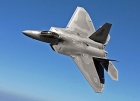Mgellis
Posts: 2054
Joined: 8/18/2007
Status: offline

|
I had a couple of "future timeline" ideas that could be used to develop scenarios. I'd be grateful for some feedback. Does these sound plausible?
Timeline 1: Putin Attacks the Baltics; NATO responds with Global Blockade
Sometime in the next few years, Putin invades one or more of the Baltic states, claiming that they are really part of "Greater Russia" and should not be independent countries. NATO acts, but is not prepared for the attack and simply does not have the forces on hand to prevent the occupation or push Russian forces out of the Baltic states. NATO takes heavy losses on the ground. However, the willingness to act shows that NATO is not dead. And Russia is now in a rather precarious position--they have gained the Baltics, but the West now knows what they are dealing with. NATO decides to not mount an invasion to liberate the Balkans, at least not immediately. Instead, they impose a global blockade. Russian ships and planes outside of Russia are to be seized or destroyed. And every other sanction possible is imposed. Meanwhile, huge NATO forces are being built up to defend possible lines of attack (Germany, Norway, etc.) Russia has lost the element of surprise and does not think it can actually invade Europe and win. But if it does not give up the Baltic states, it may freeze to death in the dark and/or starve.
Would Russia try to gain control of the seas and the skies so that it could break the blockade? But could it do this on a global scale? Even if it can protect its own waters, once a Russian ship shows up in, say, a Peruvian port, all NATO has to do is park a sub in international waters and wait for it to come back out. Boom!
What happens? How do you think this plays out?
Timeline 2: The Next Pacific War
Sometime in the next few years, China expands its relations with several small Pacific nations, basically places like Fiji and Papua New Guinea into client states. It uses these Pacific nations (and some in the Indian Ocean, too) as bases, giving it a "string of pearls" that stretches from South Sudan to Micronesia. Each pearl has a major installation, airfields, submarine pens, supply depots, squadrons of ships that are stationed there, lots and lots of SAM missiles and cruise missiles and anything else that might give a potential attacker a hard time. So, when something finally triggers a conflict between China and the US, the US suddenly finds itself fighting a China that has become, to an extent, an oceanic power like itself with a global reach. China, in 2025, might have four or five carrier groups (and could probably deploy three or four at a time), dozens of attack subs (about a third of them nuclear), and a ferocious number of advanced aircraft. Not as many as the US and its allies, perhaps, but they don't have to invade; all they have to do is survive. If those pearls are still there at the end of the war and their influence remains unbroken, China wins.
Thoughts? Observations? Comments?
|
 Printable Version
Printable Version









 Awesome! More pewpews and stormtroope- woops.
Awesome! More pewpews and stormtroope- woops. 
 New Messages
New Messages No New Messages
No New Messages Hot Topic w/ New Messages
Hot Topic w/ New Messages Hot Topic w/o New Messages
Hot Topic w/o New Messages Locked w/ New Messages
Locked w/ New Messages Locked w/o New Messages
Locked w/o New Messages Post New Thread
Post New Thread